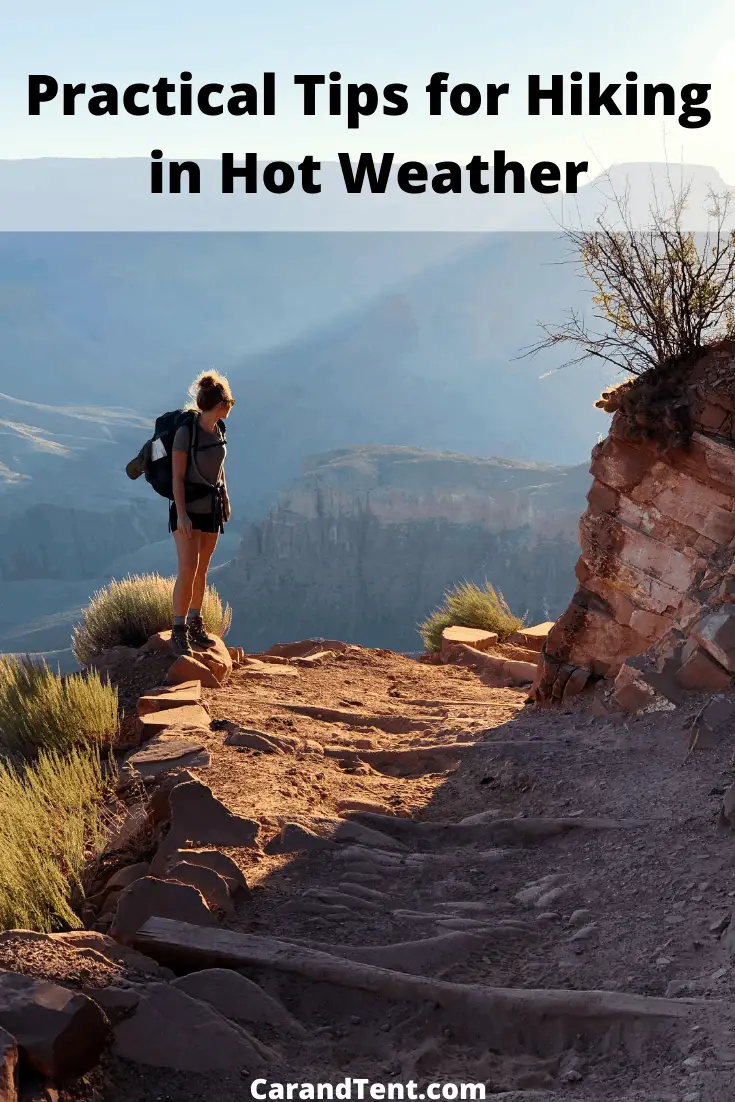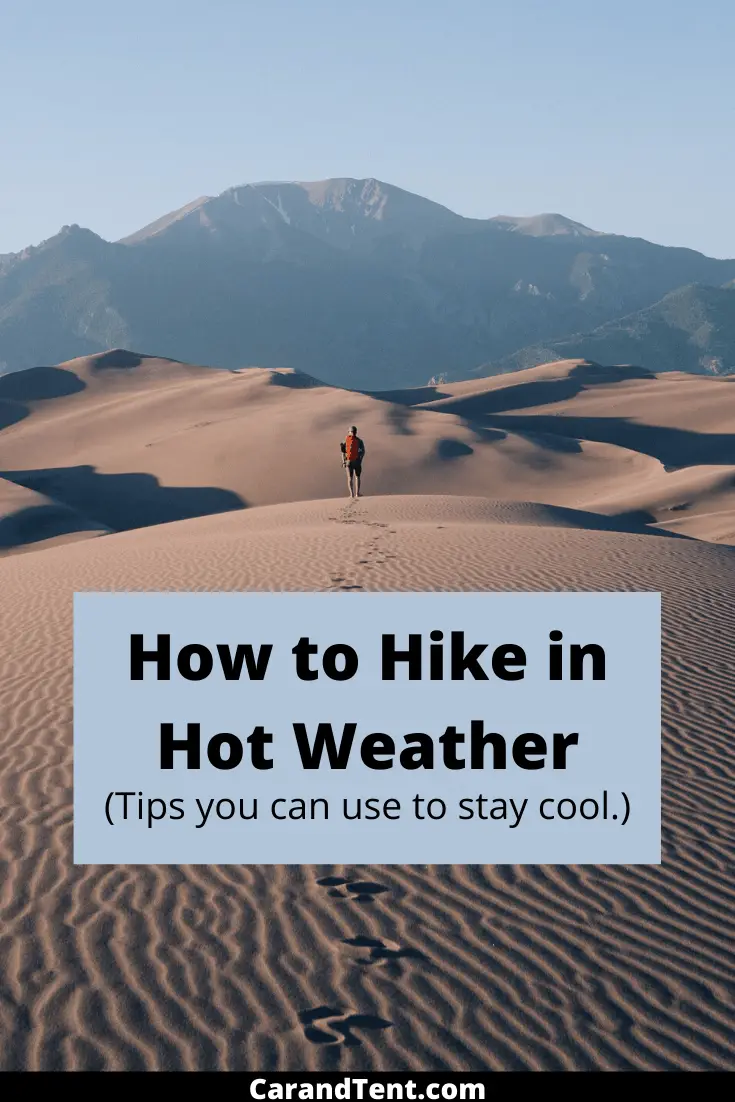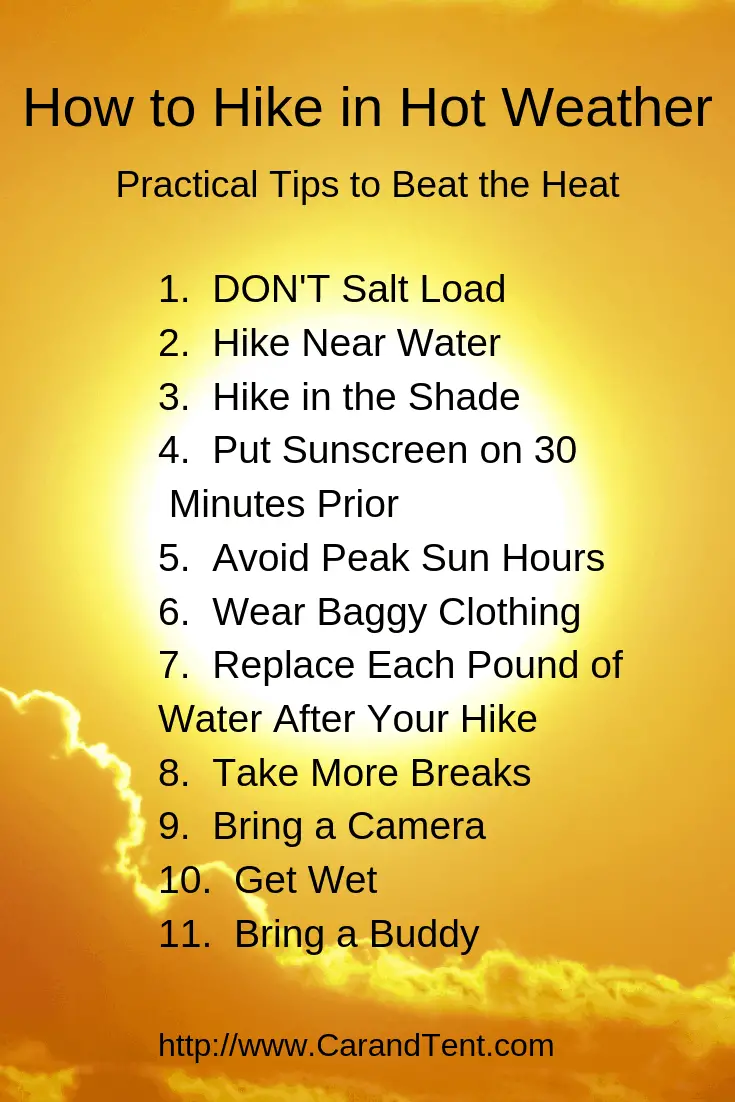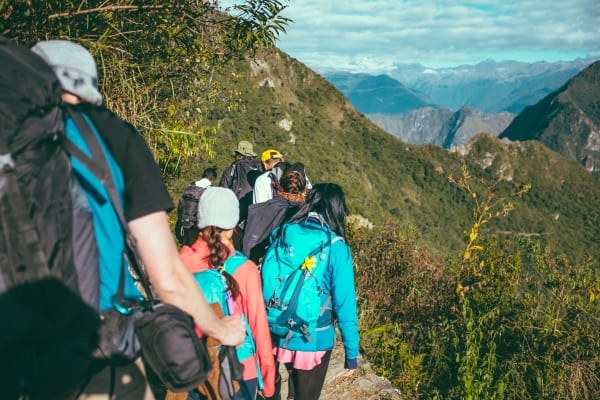
I love hiking and I’ll do it in pretty much any weather that comes my way. This being said, when I hike in hot weather I do take a few extra steps both before and during my hike.
In this post, I’ll go over how to hike in hot weather while enjoying it and avoiding overheating.
Table of Contents
DON’T Salt Load
I’ve seen a lot of hiking blogs telling people to eat a lot of salt when hiking in hot weather. The theory is that since you’re sweating out some of your salt, you may be at risk of losing too much sodium in your body. This may be true for someone on a low-sodium diet who is hiking hard for more than four hours but it is unlikely to happen to the average hiker.
The reason for this is that most people are already ingesting about 3 to 5 times more salt than they actually need. If you only need 500 to 1,000 milligrams and you’re eating 3,000 milligrams a day already then at a loss of 500 milligrams an hour, you’ll still be able to hike for four hours before getting down to the normal amount.
Also, some studies have actually shown that salt loading can be harmful to your health. This is especially true if you’re already used to the hot climate as you won’t lose as much salt when you sweat.
Hike Near Water
The last time I hiked during a heatwave, I used it as an excuse to drive an hour and a half away from my house to do a beautiful waterfall hike. It was nearly 100 degrees out but it felt like 70 down by the water.
Why, is it so much colder hiking near water? The reason is that the water temperature is cooler than the air and it works to cool the surrounding area. Also, if you’re doing a waterfall hike, you’re altitude is usually changing rapidly and we all know that the higher the altitude, the cooler the temperatures are.
Hike in the Shade
Did you know that temperature reports and forecasts are talking about the temperature recorded in a shaded area? Step out into the sun and take a temperature reading and it could be another ten degrees hotter. Not only this, but the heat index goes up in the sun as well.
Hike in the shade and you’ll stay cooler and you’ll reduce your chances of getting cancer. Also, if you’ll be completely shaded the entire hike, you can take your hat off which will also help you to stay cooler.
Put Sunscreen on 30 Minutes Before Heading Out
Ever wonder why even after you’ve used sunscreen, you still end up getting burnt? It is possible that you didn’t put on enough, but it is more likely that you just didn’t put it on early enough.
According to skincancer.org, you need to apply your sunscreen 30 minutes before sun exposure because it can take this long for the ingredients to fully bind to the skin. Also, you need to make sure you re-apply this sunscreen every 4 hours. This is because sunscreen wears off within about 4 hours. In fact, to be on the safe side, you may want to re-apply every 3 hours and 30 minutes.
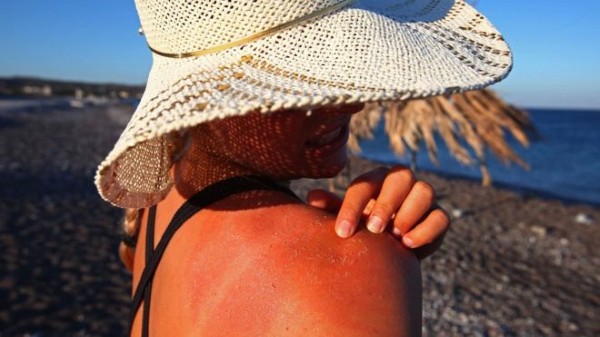
Try to Avoid Peak Sun Hours
When the sun is at its peak, you’re more likely to get burned by it. If possible, try to get your hike in before 10:00 AM or after 4:00 PM. These are the hours when the sun is less likely to burn you.
In some cases, you may be able to do a hybrid approach where you plan to hike the parts of the trail that are less shaded in the morning and evening and hike the areas that are more shaded when the sun is at its peak.
Wear Baggy Clothing
While it is tempting to wear the least amount of clothing possible in the heat, it isn’t a very good idea. Keep your body covered and you’ll be cooler and less likely to be affected by skin damage.
Provide adequate airflow to your skin by wearing baggy clothing in a lightweight and breathable material. Hiking in a good pair of hiking pants is much more comfortable than hiking in a pair of gym shorts or jeans.
Wear a Hat and Shades
Get additional protection from the sun with a hat and a pair of sunglasses. If a boonie hat can protect a soldier while out in the field, it should be good enough for a day hike. Get one with a few ventilation holes in it to help keep you cool and make sure the sunglasses are polarized.
Replace Each Pound of Water After Your Hike
Everyone always says to drink more water when exercising but nobody ever says how much. Here is an easy way to know exactly how much additional water you need to drink.
Before you head out on your hike, weigh yourself. When you get back from your hike, weigh yourself again. For every pound, you’ve lost, drink an additional 16 ounces of water. This will ensure that you replace all of the water you lost while out on your hike.

Take More Breaks
The water we expel while sweating isn’t actually what cools us down. We cool down when sweating through the process of the sweat evaporating. Unfortunately, if you don’t give yourself enough time to rest, you’ll end up overheating before this process can work its magic.
Plan to take a few extra breaks while hiking in hot weather and be sure to drink more water each time you do.
Bring a Camera
One easy way to ensure that you take enough breaks is to bring a digital camera or even your smartphone with you. Every time you see a great landscape or something else you think might make a good photograph, stop to take a picture of it. Invest time into getting the perfect shot and you’ll come home from your hike less tired and with a lot of great pictures to remember it by.
Get Wet
You don’t need sweat to create the evaporation process. This process can be artificially created by simply pouring some water over your skin.
The cooler water will help cool you down instantly and the evaporation process will continue to cool you down until you’re completely dry. As an added bonus, you can bring a portable battery-powered fan with you to help speed up the evaporation process.
If You Can’t Beat Em, Join Em
This is just my lame way of saying if you can’t beat the heat, bring a buddy with you instead. You and your hiking buddy can keep an eye on each other and remind each other to take breaks and drink water. If one of you does end up suffering the effects of heat exhaustion, you’ll have somebody close by to help you.
Ideally, you and your buddy will drink enough water and take enough breaks to avoid heat exhaustion. However, I’ve seen many people succumb to it and it is possible that it could happen to you or your friend. If this does happen, you’ll want to know so that you can take steps to correct it.
Here are some of the more noticeable signs of heat exhaustion according to the Mayo Clinic:
- Faintness
- Dizziness
- Fatigue
- A Weak Pulse
- A Rapid Pulse
- Muscle Cramps
- A Headache
- Nausea
If you notice any of these signs, immediately find a cool place to rest. Drink water and loosen your clothing to provide additional airflow. Also, try putting cool water over your wrists or immerse them in a body of water if possible. If your symptoms do not clear up within an hour, you’ll want to seek emergency medical care.
Final Thoughts
It can be challenging to hike in hot weather but this doesn’t mean you shouldn’t do it. Just be cautious and make sure you keep cool. Start off slow and go on longer hikes as you become more accustomed to the hot weather. If you have to pack it up early and head back out on another day, then there is no shame in doing so.

